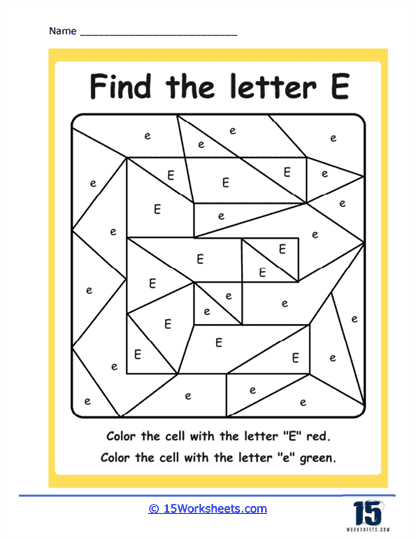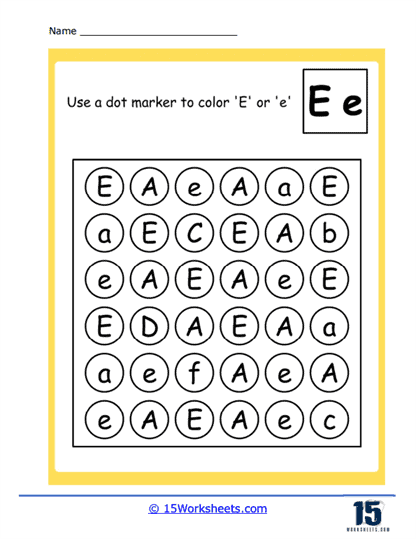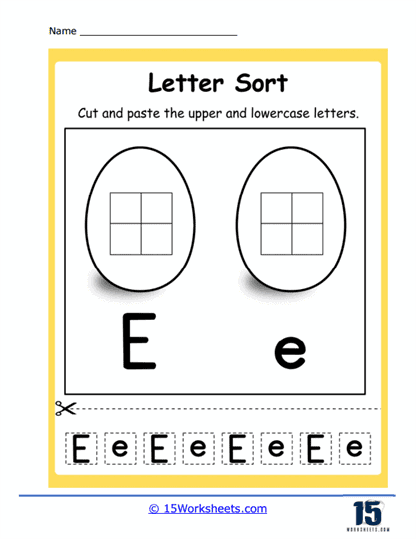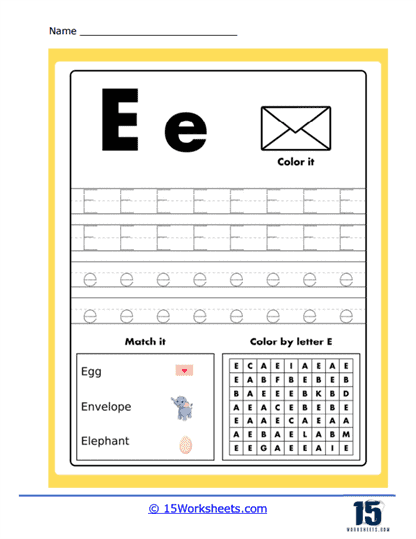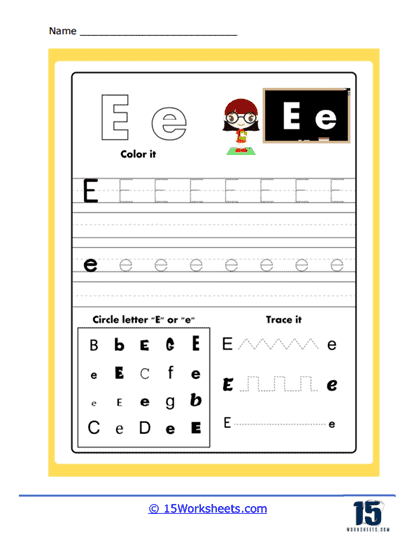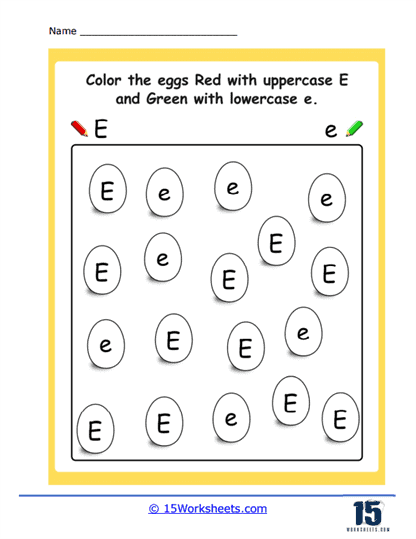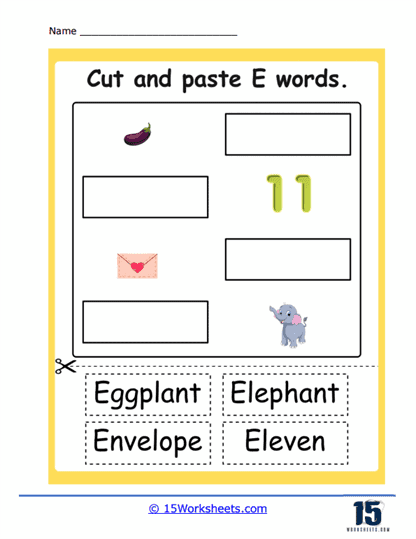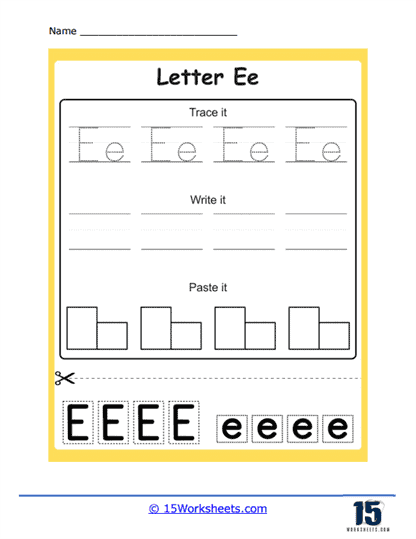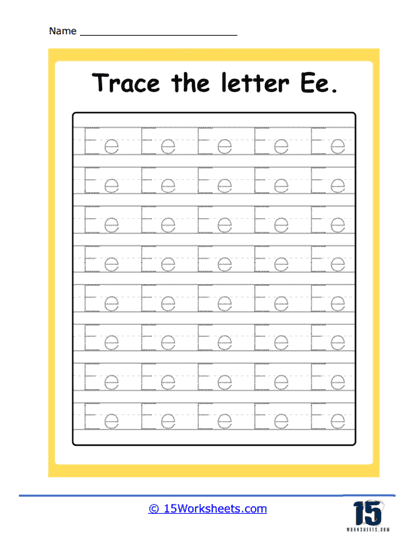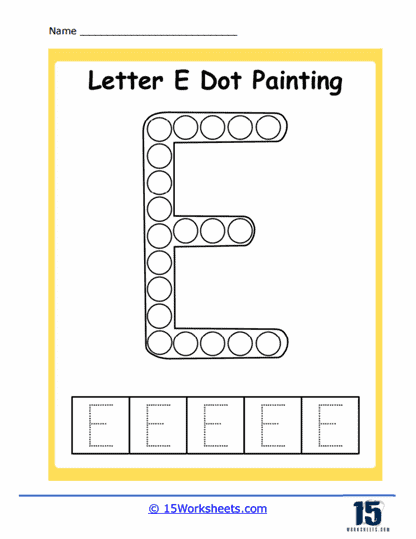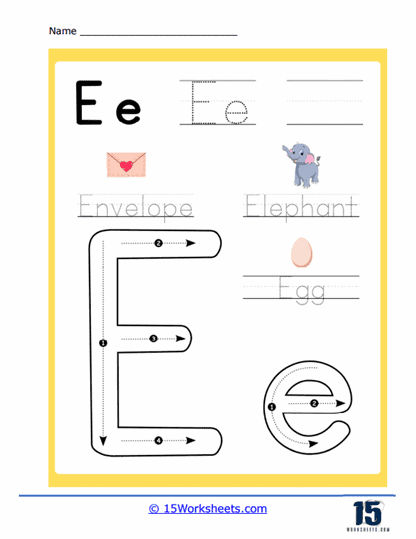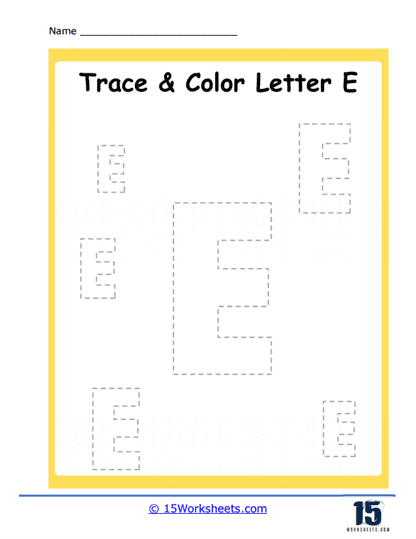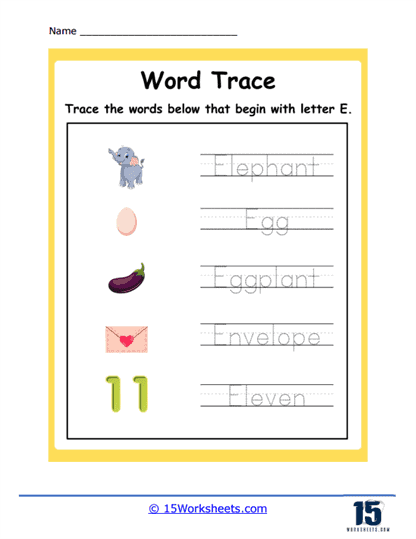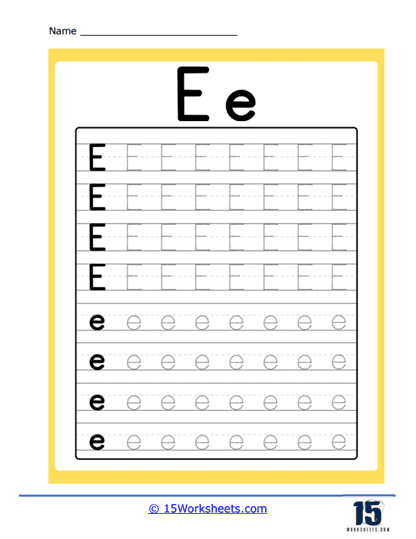Letter E Worksheets
About These 15 Worksheets
These letter E worksheets were for elementary aged children to practice and master the letter E, both its uppercase and lowercase forms, and the sounds associated with it. These worksheets typically comprise various activities such as tracing exercises, coloring tasks, matching games, and phonics exercises. Each activity is purposefully crafted to enhance the child’s literacy skills and promote a thorough understanding of the letter E.
The standard worksheet will involve tracing exercises where children can follow the dotted lines to write the letter E. This practice allows them to become accustomed to the shape and formation of the letter, which is essential in enhancing their handwriting skills. Simultaneously, this activity fosters recognition of the letter E, crucial for their emerging reading skills.
Coloring activities often accompany tracing exercises, where children color images of objects that begin with the letter E, like ‘elephant’ or ‘egg.’ This fun and engaging task serves a dual purpose. It enhances the child’s fine motor skills while simultaneously reinforcing the phonetic sound of the letter E. Through this activity, children learn to associate the letter E with its corresponding sound, laying the groundwork for reading and phonemic awareness.
Matching games, where children are asked to match the letter E with pictures of items starting with the letter E, reinforce the letter’s recognition. This activity ensures that children can correctly identify the letter E in different contexts, building the necessary skills for letter recognition.
Phonics exercises are a key component of these worksheets. Here, children might be tasked to identify words that start, contain, or end with the letter E. These exercises expose children to the use of the letter E in various words and context, helping to build their vocabulary and understanding of language structure. These worksheets help reinforce the phonics associated with the letter E. Understanding that words are made up of discrete sounds is crucial in developing reading skills, and associating the letter E with its sound aids this process. This understanding, known as phonemic awareness, is a vital pre-reading skill.
The importance of Letter E worksheets in elementary education cannot be overstated for several reasons. First, these worksheets form an essential part of building a child’s literacy skills. Recognizing, writing, and pronouncing the letter E correctly are foundational skills in reading and writing.
These worksheets accommodate different learning styles, making learning accessible for all students. Visual learners benefit from seeing the letter and related images, auditory learners from hearing the letter’s sound, and kinesthetic learners from writing or tracing the letter. This inclusive approach ensures all learners can engage and benefit from the worksheet.
What Sounds Can The Letter E Make?
The letter E is a versatile letter in the English language and can make several different sounds depending on its placement in a word and the letters that surround it. Understanding these different sounds is a crucial part of learning to read and write. Here are the key sounds the letter E can make:
Short E Sound – This is the most common sound for the letter E, often found in single-syllable words or at the beginning of longer words. The short E sounds similar to “eh” and can be found in words such as “bed”, “pen”, “egg”, and “end”.
Long E Sound – When E is used in a closed syllable (a syllable ending in a consonant), it usually makes a long E sound, which is pronounced like “ee” or “ea” in “see” or “read”. You can find the long E sound in words like “me”, “tree”, “see”, and “bee”. Additionally, it’s often found at the end of words, such as in “he” and “she”.
Silent E – The letter E can also be silent, often when it is at the end of a word. This silent E can change the sound of the vowel before it, making it long. For example, in the word “like”, the E is silent, but it changes the sound of the I to a long I sound. Other examples include “rake”, “theme”, and “note”.
Schwa Sound – The schwa sound is a unique phoneme in English represented by an upside-down ‘e’ in the International Phonetic Alphabet. It’s an unstressed and neutral vowel sound, often pronounced as “uh”. The letter E can make the schwa sound when it’s in an unaccented or unstressed syllable, as in the second E in “elephant”.
E in Combination – When paired with other letters, E can create different sounds. For instance, in “ear”, “earl”, and “earn”, the combination of ‘ea’ and ‘e’ at the end or beginning of a word often creates an “er” sound. In “eight”, “neigh”, or “weight”, ‘ei’ or ‘eigh’ usually makes a long A sound.

